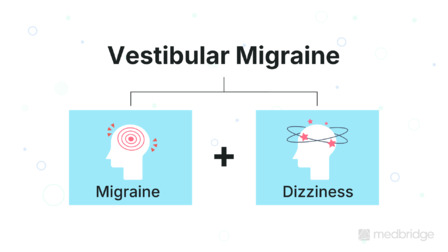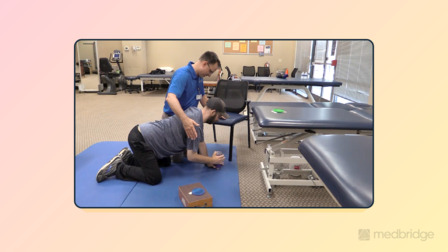Pathological Conditions in the Central Vestibular System
Presented by Laura Morris and Jeffrey Hoder
12-Month Subscription
Unlimited access to:
- Thousands of CE Courses
- Patient Education
- Home Exercise Program
- And more
This course examines the pathological conditions affecting the central vestibular system, focusing on their impact on gaze stability, postural control, and functional mobility. Participants will gain insights into conditions such as brainstem and cortical strokes, neurodegenerative diseases, and traumatic brain injuries, as well as vestibular migraine and persistent postural-perceptual dizziness (PPPD). Through clinical examples, the course emphasizes differential diagnosis, diagnostic criteria, and evidence-based management strategies to address these complex conditions. Designed for occupational and physical therapists, this course equips clinicians with the tools to enhance patient outcomes by addressing the central vestibular system’s multifaceted role in sensory integration, motor coordination, and balance.
Learning Objectives
- Determine common central vestibular conditions observed in clinical practice to support accurate diagnosis and intervention planning
- Distinguish between the pathophysiology and functional behaviors associated with ipsiversive pushing in lateral medullary syndrome and contraversive pushing in pusher syndrome to enhance targeted therapeutic approaches
- Identify common symptom patterns for neurodegenerative conditions affecting the central vestibular system, emphasizing implications for patient care and management
- Apply diagnostic criteria to recognize chronic dizziness, persistent postural-perceptual dizziness (PPPD), and vestibular migraine conditions in clinical assessments
- Implement guidelines for managing mild traumatic brain injury (mTBI) as it relates to vestibular impairment to improve patient outcomes in daily functional activities and occupational tasks
Meet your instructors

Laura Morris
Laura Morris is a physical therapist and lecturer with more than 30 years of experience in the management of adults with neurologic disorders. Her clinical work focuses on vestibular disorders and mild traumatic brain injury at Elmhurst Hospital, part of Edward-Elmhurst Health in the Chicago area. She teaches continuing…

Jeffrey Hoder
Dr. Hoder’s specific area of expertise is in adult neurological rehabilitation related to the examination and management of adults with neurological deficits. As a clinician and educator, his philosophy is to train compassionate and critical physical therapy clinical scientists to evaluate and manage individuals with complex…
Chapters & learning objectives

1. Brainstem and Cortical Stroke Conditions
This chapter explores central vestibular dysfunction resulting from brainstem and cortical strokes. Participants will learn to differentiate between acute vestibular syndromes caused by central versus peripheral lesions and utilize bedside diagnostic tools such as the HINTS protocol. The chapter also covers the pathophysiology and clinical presentation of conditions like lateral medullary syndrome and pusher syndrome, emphasizing targeted interventions to address gaze and postural instability.

2. Degenerative and Cerebellar Conditions
This chapter delves into the effects of neurodegenerative diseases and cerebellar dysfunction on the central vestibular system. Participants will review hallmark signs such as ataxia, nystagmus, and impaired gaze stability, alongside specific conditions like multiple system atrophy (MSA), CANVAS syndrome, and cerebellar degeneration. Clinicians will learn how to tailor therapeutic strategies to manage motor incoordination and sensory deficits while improving balance and mobility.

3. Global Conditions: Traumatic and Acquired
This chapter examines traumatic and acquired conditions that impact the central vestibular system, including traumatic brain injuries, concussions, and vestibular migraine. Participants will explore the unique diagnostic challenges of these conditions, such as persistent dizziness and sensory sensitivities, and gain strategies for rehabilitation focused on gaze stabilization, visual motion intolerance, and dual-task training. Evidence-based interventions for persistent postural-perceptual dizziness (PPPD) are also highlighted to support functional recovery.


